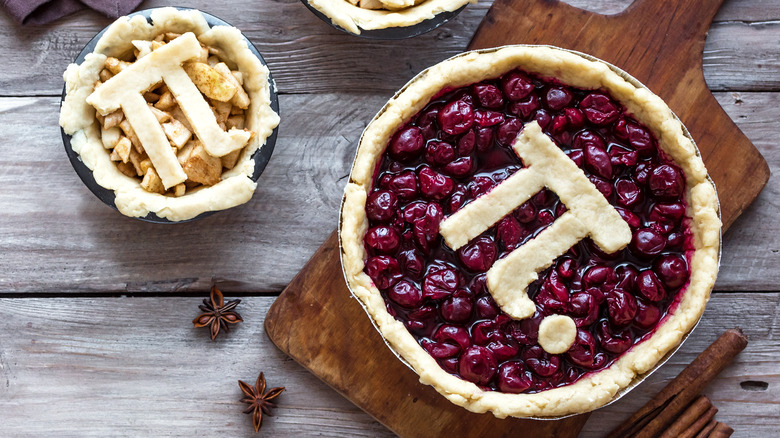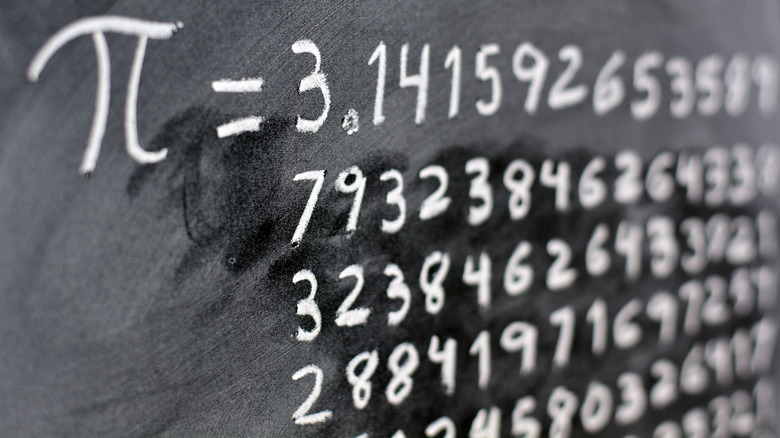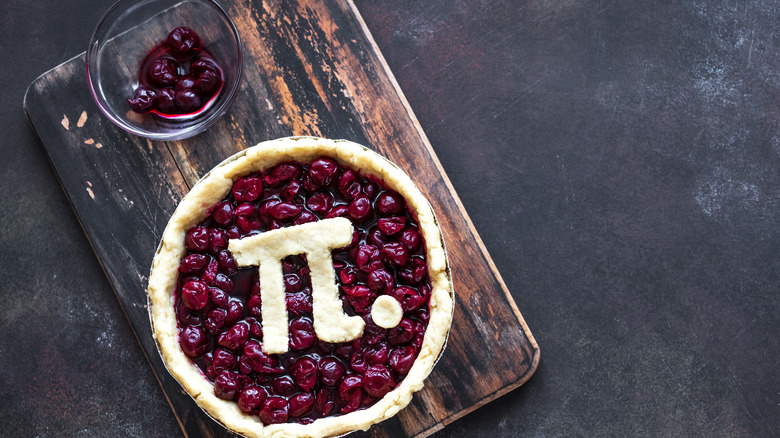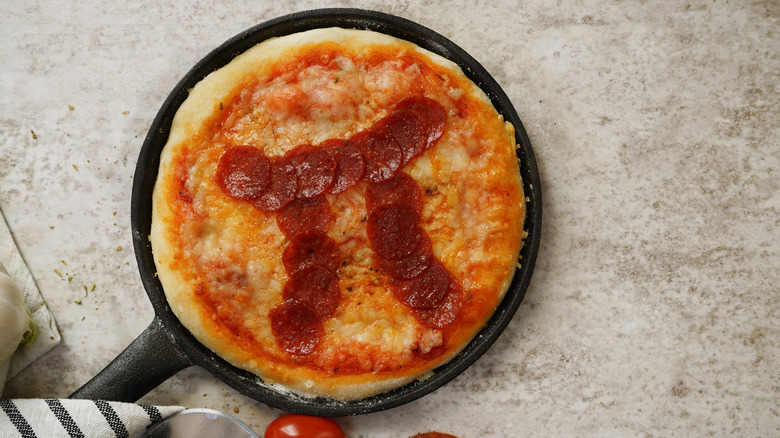The Fascinating History Behind Pi Day
It seems like every day is another National "Something" Day on social media. March 14, National Pi Day, might seem like another one of those faux holidays on the surface, but it is actually about way more than just getting your favorite pizza for $3.14.
Pi, the number used to find the area and circumference of a circle, actually goes on infinitely. According to History.com, pi has currently been calculated out to "more than [one] trillion decimal places." The last calculation done at the writing of this article — according to USA Today — was in August 2021 at the University of Applied Sciences in Switzerland. It put pi at 62,831,853,071,796 digits.
Whether pi is useful for calculating the area of a circle has been questioned in more recent years; PiDay.org noted that a growing number of mathematicians believe an alternative called tau is better. "You can simply multiply tau with the radius of a circle to calculate its circumference intuitively," the website explained. Pi has its uses outside of math class, though. According to ABC News, it has "been used to help calculate the orbit of planets in the solar system and examine how ripples in rivers carry energy."
March 14, or 3/14, is a day that honors the legacy of the number and is steeped in history. It's also Albert Einstein's birth date and — in 2018 — was the day Stephan Hawking died.
Pi can be traced back to ancient times
Pi can be traced back to the days of Ancient Egypt, according to PiDay.org. However, it was the Greek mathematician Archimedes who is credited as being the first to use "pi" as the name of the number used to find the area and circumference of a circle, according to Time. Before this, PiDay explained that mathematicians would use polygons to calculate the area of a circle, adding more sides to the shape to get as close to the area as possible.
The symbol for pi didn't even come until later; mathematician William Jones started using the Greek symbol in place of a number or word in 1706, Time explains. The symbol went mainstream once Leonhard Euler — who worked for Catherine the Great — started using it. When asked about why there was a gap, John Conway, mathematics professor emeritus at Princeton University, told Time that, "Euler was a much better mathematician than the people who used [pi] before, and he wrote very good textbooks."
Now that you understand the history and significance of pi, let's talk about the history of Pi Day.
Pi Day was declared a national holiday in 2009
If you don't remember celebrating Pi Day as a kid, don't worry; you probably didn't. Pi Day wasn't officially a holiday until the House of Representatives declared it one in 2009, per USA Today. The house aimed to provide an opportunity for "schools and educators to observe the day with appropriate activities that teach students about [p]i and engage them about the study of mathematics," according to Time.
Larry Shaw, a former physicist who worked at the Exploratorium in San Francisco, California, is said to be the first to organize a celebration around the mathematically symbolic date, per USA Today. When ABC News asked his daughter Sara Shaw why he wanted to celebrate March 14, she explained. "Unfortunately, in our society, the concepts of science and math are thought of as being boring and tortuous and lame," she said. "For him, these things are exciting and fun, and he was really good about sharing that with people."
Back in 1988, Shaw organized what USA Today called a "pie festival." At exactly 1:59 p.m. on March 14, ABC News explained that Shaw led a march around the Exploratorium that was followed by pie he and his wife prepared for the other museum workers. From that first celebration, things only started expanding.
Many people celebrate Pi Day by eating pie
You don't have to lead marches to celebrate Pi Day, but it is a day that's supposed to be fun. "It's a celebration," Sara Shaw told ABC News, "and a coming together of everybody to enjoy something that is based in science but in a fun, educational way." Which — beyond the obvious association between pi and pie — might be why so many turn to baking pie on March 14.
Rahul Mandal, metrology researcher and winner of The Great British Bake Off in 2018, told Physics World that baking "is a perfect combination of chemistry, biology, and physics." He explained how baked goods — like pie crusts — generally share the same base ingredients, but "the specific propositions ... make all the difference." It is truly a science.
If you're celebrating by baking pies, we recommend this 30-minute Chicken Pot Pie recipe for something savory. If you're craving sweet, you can't mess up this Easy Apple Pie. Or, if you're not ordering pizza, try making homemade pizza.
But, if you want to keep in line with the Exploratorium, you need a walk in a circle 3.14 times — they walk around their Pi Shrine, a plaque dedicated to pi in a circular classroom — and then sing "Happy Birthday" to Einstein.



